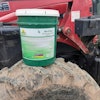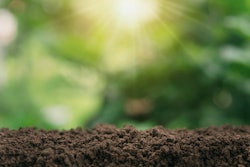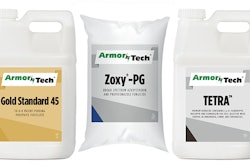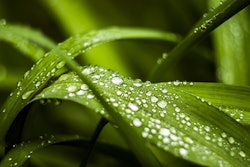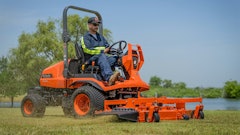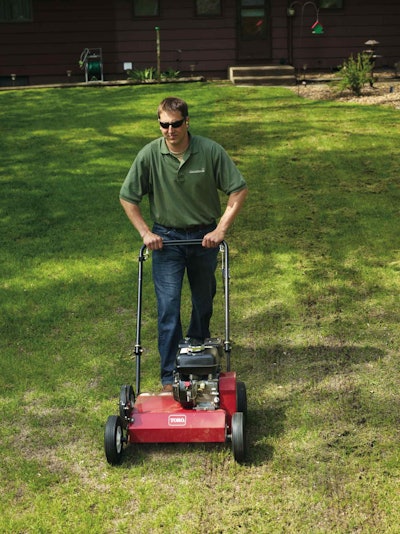
“Do you offer natural lawn care services?”
It’s a new question many landscape contractors around the country are being asked by longtime customers and prospects alike. Many landscapers have seen the trend and adapted their service offerings to include natural or organic turf care procedures, others are offering only organic options, while some have decided to continue offering only traditional practices.
Traditional turf care tactics sometimes face questions from the general public. Traditional lawn care applications can contain active ingredients that some would prefer to keep out of the environment, which is causing property owners to ask the question before contracting services. Essentially, more and more customers are asking for not only finely manicured lawns, but finely manicured lawns that are delivered in a sustainable and responsible way.
Landscape contractors who have not yet seen this demand from their customer base can get ahead of the game when their customers eventually start asking for these services by first understanding the science of turf and then taking steps to adapt their business processes to support this trend. Potential adaptations can include investing in additional equipment, training staff in natural turf care, and understanding that the natural turf care craze is something that isn’t going away anytime soon.
The Science Behind It
In terms of agronomics, turfgrass plants — like any other living organism — need to have their basic requirements met in order to reproduce and provide a healthy, quality lawn surface. The basic requirements we’re talking about to produce healthy turf are adequate light, soil water, soil oxygen and nutrients.
There are a number of practices that landscape contractors can offer to provide these basic requirements – in lieu of additional product applications – to help foster a healthy and resilient lawn.
O2 and H2O Through Aerification
One of the key practices to help improve the overall health of a lawn is aerification. This process creates openings in the soil, creating air exchange, which allows noxious gases in the soil to be released, while atmospheric air, which contains more oxygen, to enter the soil. Openings from the aerification process can also slow water movement across the soil surface, reducing runoff and increasing water infiltration that also helps keep nutrients from washing away. One additional key benefit of a proactive aerification program is that the soil pulled to the surface during the aerification process mixes with dead and dying plant material on the surface. This helps incorporate the organic matter into the soil, which helps reduce thatch accumulation. To maximize the benefits of aerification, landscape contractors will want to ensure they’re performing the process while grass is actively growing and has received adequate water and nutrients. This helps the grass recover and fill openings quickly.
However, the openings created during the aerification process can also provide a place for weeds to germinate and establish. It’s important for the landscape contractor to understand the environmental conditions under which the weeds in their area are most likely to germinate, and to avoid aerification during those time periods. This can differ between regions and between warm-season and cool-season grasses.
Applied Science: Nutrients
Providing nutrients to a lawn is an important part of any maintenance program. There’s a myth that “natural” or “organic” lawns don’t need any fertilizer applications, but all plants require nutrition for healthy growth. Proper fertilization is a key building block to create healthy turfgrass, and a healthy sward of turfgrass is the absolute best deterrent to weed invasions. Simply put, landscapers want to create an environment where there’s no room for unwanted weeds to get a foothold in their customers’ lawns.
In the past, there were very few natural or organic fertilizer options. The good news is that consumer demand has now changed that, and there is now no shortage of organic fertilizer options.
Savvy landscape contractors who want to select the best fertilizer for their customers’ lawns will want to take a soil test to understand what is already present in the soil. This allows the landscaper to select a fertilizer that contains only the nutrients that, according to the test, are missing and that the lawn truly needs. This careful selection process goes a long way in reducing inputs and preventing excess nutrients from leaving the lawn. Additionally, care should be used when selecting any fertilizer, but especially organic fertilizers, because many communities have restrictions on phosphorous applications to turfgrass — a common ingredient in many organic fertilizers.
Many landscapers already know that fertilizer applications are dependent on the species of grass, the time of year, and where they are located. What they may not know is that a simple soil test can also help them ultimately save time and money on applications, because of the answers they uncover from the test.
Dethatching For Adequate Air and Light
In order ensure a healthy turfgrass growing environment, dethatching is occasionally necessary in a turf care regimen. However, there are a number of things landscape contractors can do to help reduce this need. Avoiding the over-application of fertilizer is one way to make sure excessive thatch levels do not accumulate. In many cases, excessive plant growth through the use of too much fertilizer is a primary culprit for a lawn with a lot of thatch. Another way to reduce thatch accumulation is by setting up a consistent, frequent mowing schedule. By mowing often, clippings can be mulched into fine pieces that are more easily incorporated into the soil and decomposed, instead of becoming thatch.
If dethatching is deemed necessary, like aerification, it is also important to dethatch at a time when weed seeds are less likely to germinate and when the turfgrass is actively growing and has received adequate nutrients and water so that it can recover and fill in the voids quickly. Again, this timing may be different for warm-season and cool-season grasses.
Soil Amendments and Overseeding: Are they necessary?
The addition of soil amendments is not normally necessary, but may make sense in certain situations with certain soil types. If it is determined that soil amendments are necessary, compost can be applied during the aerification process to increase the amount of water holding capacity on sandy soils, and can also help maintain pore space and air exchange in dense, heavy clay soils.
As far as overseeding, unfortunately this process does not always yield the results that landscape contractors and their customers expect. It’s a big challenge to get good seed-to-soil contact and there is a lot of competition from the plants that are already present. Overall, it’s better to focus on the health of the existing plants, versus trying to grow new turfgrass through overseeding.
Additional Service Offering
Natural turf care is a topic in the green industry that will continue to be weighed and measured well into the future. One thing is for sure — it doesn’t seem to be going away anytime soon. By adding natural lawn care practices, training their crews and offering it as part of their services, landscape contractors across the nation can be better positioned to address their customers’ varying needs.



